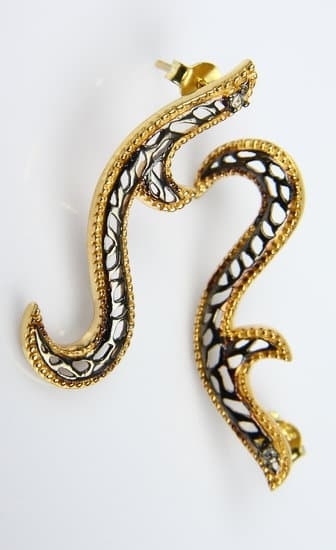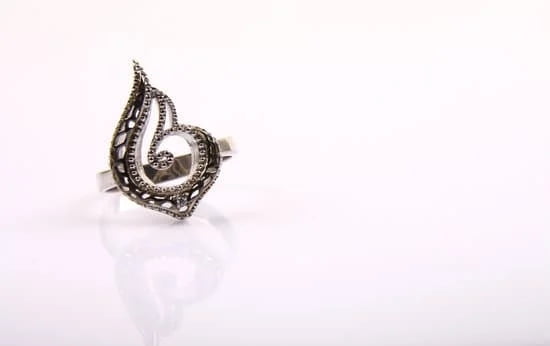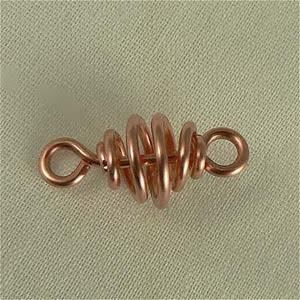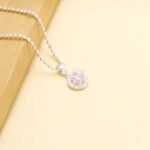Types of Jewelry
Common types of jewelry that can be safely cleaned with household items include gold, silver, and costume jewelry. All three can be easily washed with warm water and a mild dish soap, or even just with a soft toothbrush and a damp cloth. To clean these pieces with store-bought products, use non-abrasive, jewelry-safe cleaning solutions. Diamonds, pearls and opals should never come into contact with bleach or any other harsh chemicals as it can cause discoloration.
Gemstones such as sapphires, rubies and emeralds may be safely cleaned using a damp cloth dipped in some mineral oil or baby oil to give them extra shine. Avoid using vinegar to clean gemstones, as it can cause scratches on the surface of certain stones.
For pieces that are more intricate and delicate such as pocket watches—or if you are unsure what type of metal is used in the jewelry piece—it might be best to take it to a professional jeweler who will use more advanced methods such as ultrasonic cleaners to get the best results.
DIY Strategies
Household items that can be used to clean jewelry include warm water, dish soap, baking soda, white vinegar, and toothpaste. Each of these items can be combined in various amounts to produce a cleaning solution for different materials used in jewelry.
For gold jewelry, you can make a simple cleaning solution with 1/4 cup warm water and 1 teaspoon of dish soap. Gently scrub the gold piece with the solution using a soft-bristle toothbrush or cotton cloth and rinse off with warm water before patting dry with a clean cloth.
For silver jewelry, combine 1/2 cup white vinegar and 2 tablespoons of baking soda into a bowl to form a paste-like mixture. Using your finger or a soft-bristle brush, apply the paste liberally onto the silver piece and allow it to sit on the surface for two minutes before rinsing it off in lukewarm water.
For gemstones or other precious stones set in metal mounts such as diamond rings or earrings, mix together 1 teaspoon mild toothpaste (no gel) and 2 teaspoons warm water. Apply the mixture onto the item and gently rub it over the surface with whith your fingertip or soft bristled brush. Rinse off completely when finished and dry with a soft cloth.
Cleaning Techniques
Step 1: Prepare a solution of warm water and mild dishwasher detergent. Make sure that the soap you are using has no bleaching agents in it, as this could damage your jewelry.
Step 2: Soak your piece of jewelry for 10-15 minutes. If the pieces have gemstones or crystals, they may need to be soaked longer. After this is complete, remove the jewelry and use a soft bristled brush to gently scrub away dirt and buildup.
Step 3: Rinse the piece of jewelry off with warm running water. Use a soft cloth to pat dry and then allow it to air dry naturally. Do not use a hair dryer, as this can cause the metals in your jewelry to heat up too quickly which can damage them.
Step 4: For harder to remove buildups or tarnish from sterling silver, try using toothpaste or baking soda mixed with a few drops of water (Optional). Apply this mixture onto the surface of your piece and gently rub back and forth with a soft cloth or velcro pad until all discoloration has been removed.
Step 5: After cleaning, make sure to buff your items with polishing cloths like Sunshine Cloths or cotton balls dipped in commercial silver cleaner or polish (optional).
Storage and Preservation
Jewelry should be stored in a dry, air-conditioned area away from direct sunlight and high humidity. You can also use jewelry rolls, boxes or organizers with soft compartments to protect your jewelry from being scratched or tangled.
When not wearing jewelry, always store it separately in a fabric lined compartment or box away from other items which can scratch the delicate surface of the gems and metals. Use anti-tarnish strips in enclosed organizational elements to prevent tarnishing and oxidation of silver pieces.
To clean you jewelry, use an untreated (uncolored) cloth and apply gentle pressure to remove dust and dirt buildup. Non-abrasive cleaner made specifically for gold, silver, costume or pearl jewelry will clean slightly more stained jewelry. Avoid using ammonia based cleaners as these can cause damage over time and be sure to read manufacturer instructions for proper application if using commercial cleaning solutions on fine stones like emeralds, diamonds, sapphires and opals as some chemicals may harm them.
Professional Cleaning
Professional Jewelry Cleaning: Professional cleaning with specialized equipment and professional experience is the preferred method of maintaining the optimal beauty of jewelry. Experts have the necessary knowledge to clean your jewelry down to its bare metals and determine how best to clean it without causing damage. You can expect that a professional cleaner will use a variety of methods, such as ultrasonic machines, steaming, and laser cleaning — all to get better results than you could at home. Additionally, a professional jeweler may be able to repair damage if any has occurred on your pieces.
Cleaning Jewelry with Household Items: Though it is not recommended as often as giving your jewelry pieces a professional cleaning, one option for cleaning your jewelry at home is using simple household items. Many people opt for using warm water and mild dish soap/detergent — never use harsh chemical cleaners! — to rinse their jewelry off with a small brush or toothbrush before drying them off with a soft cloth or paper towel. Additionally, some jewelers recommend soaking silver in aluminum foil with baking soda dissolved in hot water to return shine and luster.
Additional Considerations
It is important to note that certain household items may not be suitable for all types of jewelry – some require specialized care. For example, mixtures with liquid ammonia and water are often used for opaque stones like turquoise, but should never be used on diamonds due to the amount of chemical in the mixture. Additionally, soft metals such as gold or sterling silver will likely need to be handled with more delicate cleansers such as ultrasonic cleaners. Ideally, one should consult a professional jeweler before cleaning any valuable piece of jewelry and follow their instructions carefully.
People with allergies or other sensitivities should also be aware that certain pearls, gemstones, and metals can cause irritation when exposed to harsher chemicals such as bleach and acetone. Always opt for a gentler solution and patch test on an inconspicuous area before cleaning an entire piece of jewelry. Furthermore, take care not to expose it directly to sunlight or high temperatures as this can damage some setting materials and gems over time.

Welcome to my jewelry blog! My name is Sarah and I am the owner of this blog.
I love making jewelry and sharing my creations with others.
So whether you’re someone who loves wearing jewelry yourself or simply enjoys learning about it, be sure to check out my blog for insightful posts on everything related to this exciting topic!





